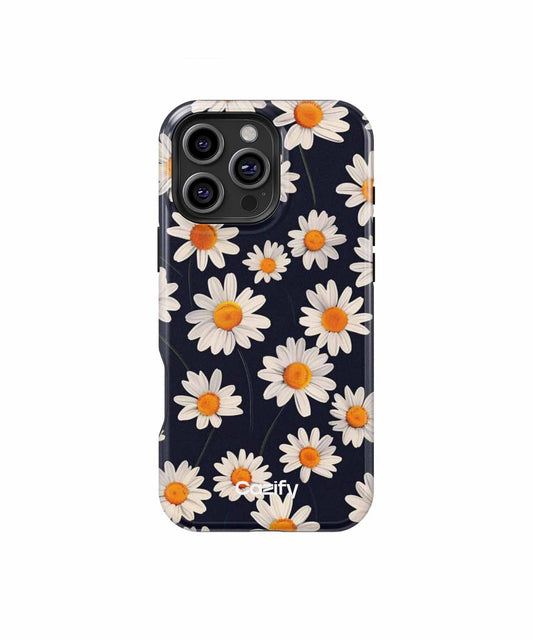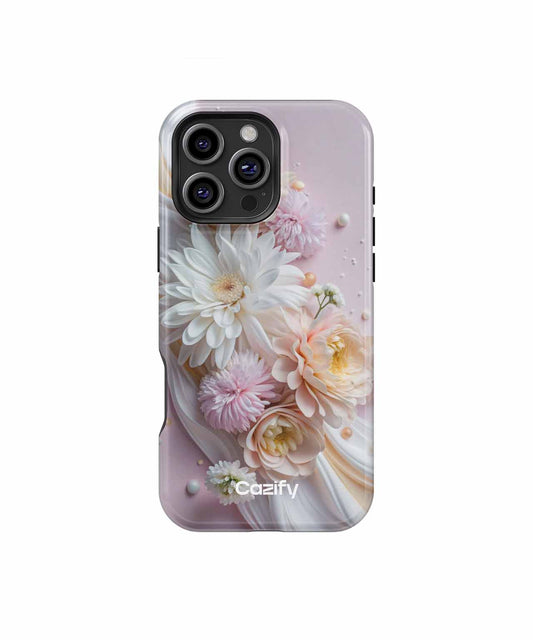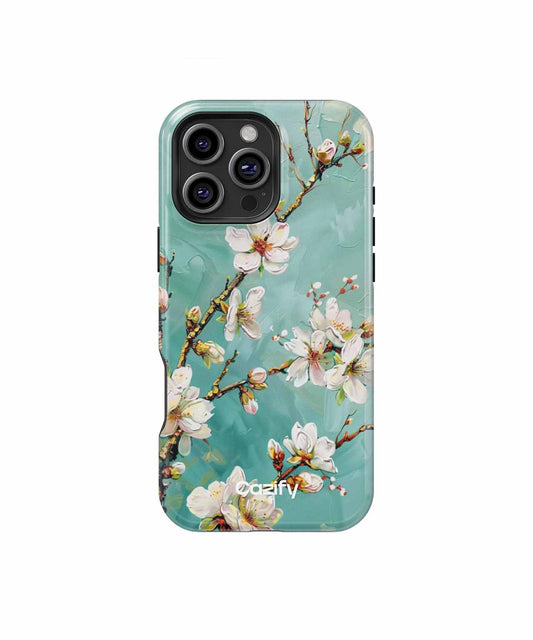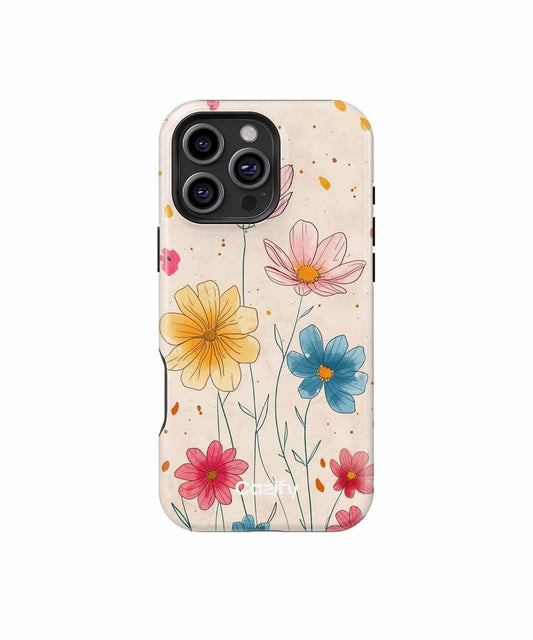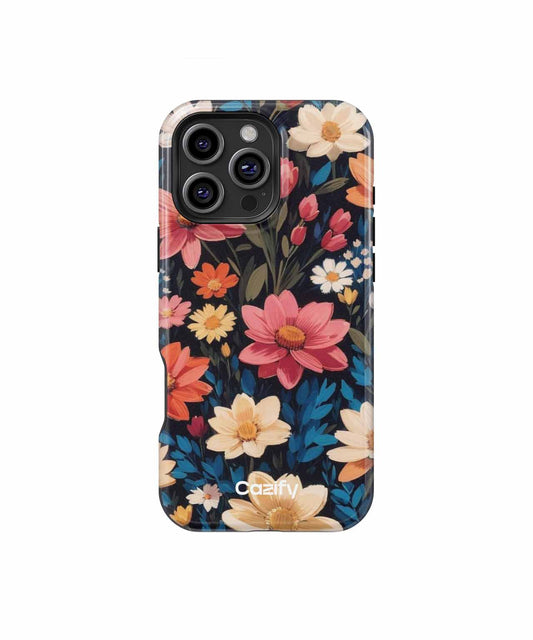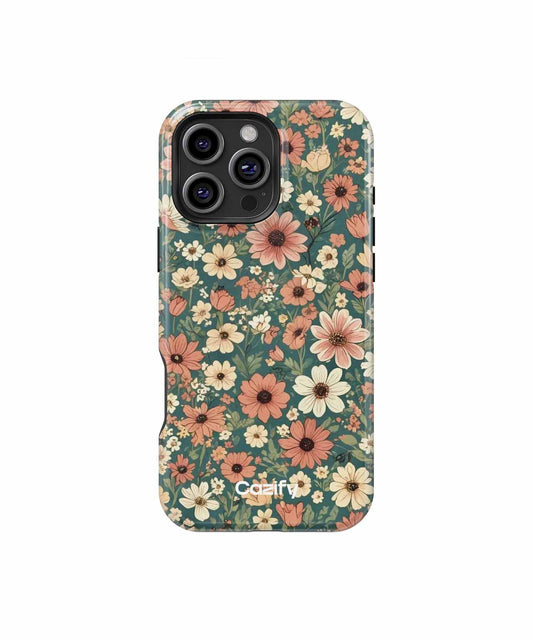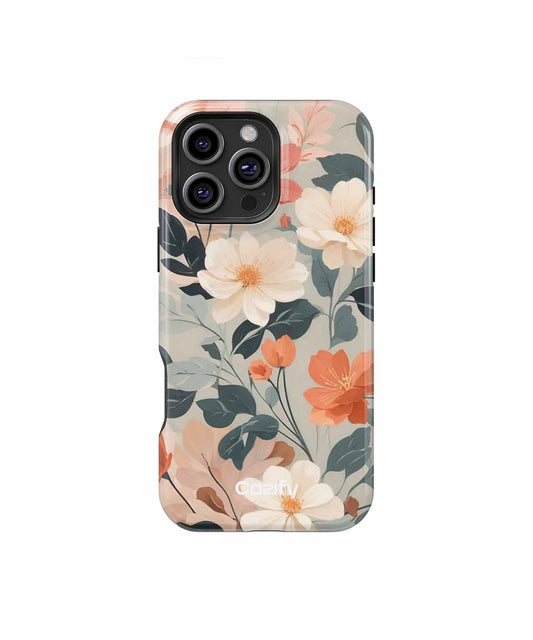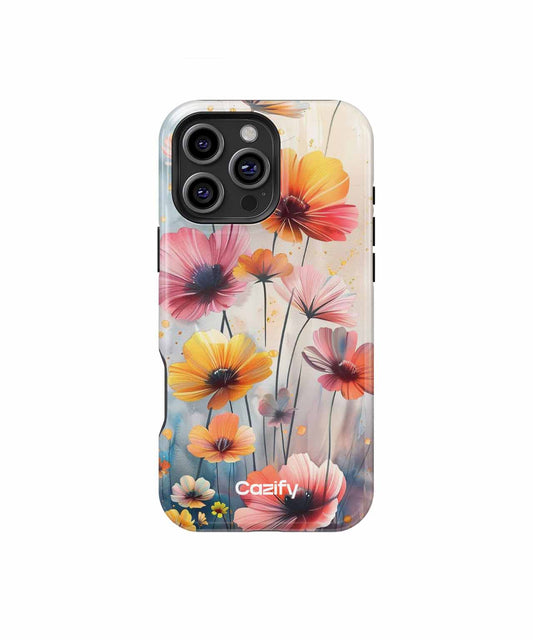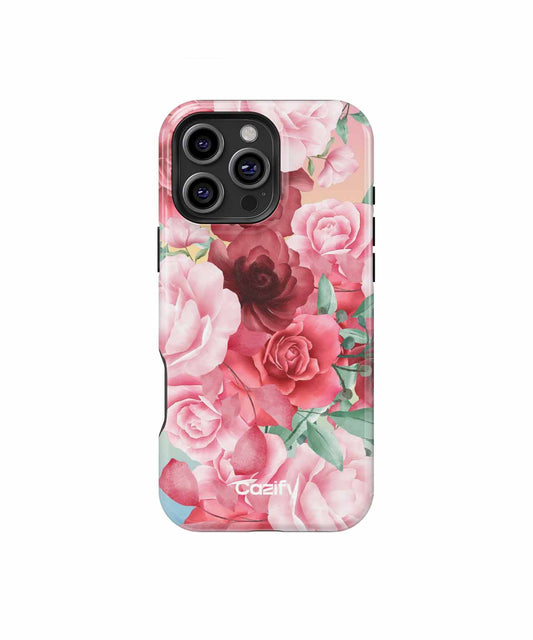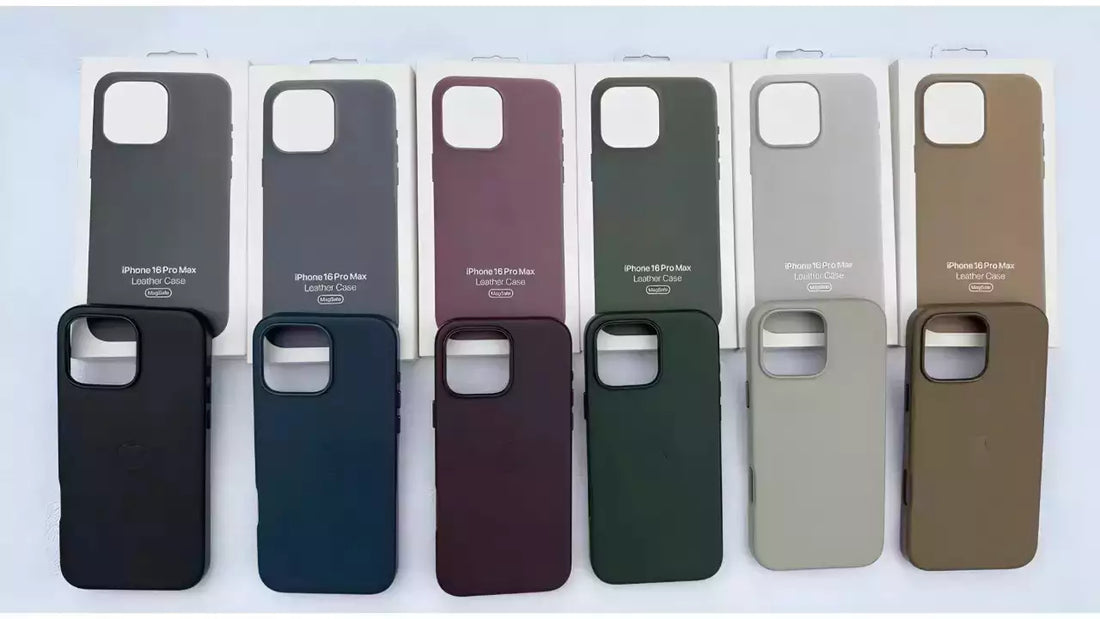
How to Choose the Perfect iPhone Case for Your Needs
Share
Introduction: The Importance of Choosing the Right iPhone Case
An iPhone is more than just a smartphone; it is often a significant investment and a highly personal device that accompanies its owner through countless daily activities. Protecting this valuable asset requires more than superficial consideration. Selecting the right iPhone case is not merely about style—it directly impacts the phone’s functionality, durability, and even resale value over time. The case one chooses serves as the first line of defense against accidents, such as drops, scratches, or spills, which could otherwise lead to costly repairs.
Each iPhone model comes with unique dimensions, features, and materials, meaning a one-size-fits-all approach will rarely suffice. A well-chosen iPhone case not only ensures proper fit and access to ports, buttons, and cameras but also enhances usability. For example, adding a textured grip can reduce the likelihood of accidental slips, while a lightweight material can balance protection with portability. Understanding these functional aspects helps in matching the case to the user’s specific needs.
Durability is another critical factor, as it determines the lifespan of both the case and the phone itself. A high-quality protective case can absorb impact in the event of an accidental fall, preserving the integrity of the device. Various levels of protection are available, ranging from slim cases for everyday use to rugged designs crafted for extreme conditions. This variety underscores the importance of aligning the case choice with how the user plans to handle and use their phone.
Furthermore, beyond practical concerns, the right case offers an opportunity to make a statement, reflecting the user’s personal taste and lifestyle. Whether minimalist, bold, or professional, cases come in countless designs and materials to suit different preferences. Combining aesthetics with functionality ensures that a phone case is not merely practical but fully integrated into the user’s daily life.
Selecting the perfect iPhone case requires careful consideration of all these factors, recognizing its crucial role in safeguarding and complementing the device.
Understanding Your Lifestyle and Daily Needs
Selecting the ideal iPhone case begins with assessing how well the case aligns with one’s personal lifestyle and daily requirements. Factors such as work environment, activities, and daily routines can significantly influence the type of case best suited for an individual. For those who frequently find themselves in demanding physical environments, such as construction sites or outdoor locations, a rugged and durable case offering enhanced protection against impacts, dust, and debris is essential. On the other hand, professionals working in corporate or creative settings may prefer sleek, stylish designs that maintain the iPhone’s aesthetic appeal while ensuring moderate protection.
Activity level also plays a critical role. Active individuals who engage in sports, fitness, or outdoor adventures could benefit from cases with extra grip, shock absorption, or waterproofing capabilities. Students or frequent travelers might prioritize lightweight and slim cases that easily fit in pockets or bags, providing convenience without compromising usability. Meanwhile, minimalists may opt for cases that prioritize form over function, such as ultra-thin or clear cases that preserve the original look of the device.
Daily habits are equally important. Those who use accessories like wireless chargers or MagSafe products should evaluate whether the case is compatible with these features. Similarly, individuals who frequently switch cases for fashion or function might look for easy-to-install designs. Some users might even require cases with built-in card holders or kickstands for added convenience during busy days.
Understanding these aspects ensures that the chosen iPhone case seamlessly integrates into one’s lifestyle, enhancing both functionality and experience.
Material Matters: Exploring the Different Types of iPhone Case Materials
Choosing the right material for an iPhone case is essential to achieving the ideal balance between protection, style, and practicality. Different materials come with unique characteristics that cater to various needs, preferences, and budgets.
1. Silicone and Rubber Cases
Silicone and rubber cases are popular for their flexibility and shock-absorbing properties. These materials provide a soft-touch texture, making them comfortable to hold and less likely to slip out of the hand. Silicone and rubber also offer excellent scratch resistance and are often affordable, though they may attract lint or dust.
2. Plastic Cases
Hard plastic cases, typically made from polycarbonate or thermoplastic polyurethane (TPU), are lightweight and durable. Polycarbonate is known for its rigidity and impact resistance, while TPU offers a softer and more flexible finish. These cases are highly customizable, often available in various colors, patterns, and designs. However, plastic cases can crack under extreme impact and may show scratches over time.
3. Leather Cases
Leather iPhone cases exude a premium look and feel, combining durability with sophistication. Genuine leather develops a unique patina over time, adding character to the case. While offering moderate protection against scratches and minor drops, leather cases are less resistant to water and may require regular care to maintain their appearance.
4. Wooden Cases
Wooden cases stand out for their eco-friendly appeal and natural aesthetics. Often crafted from bamboo or hardwood, these cases offer moderate protection and a luxurious yet earthy look. However, they tend to lack flexibility and may not provide the same level of shock absorption as synthetic materials.
5. Metal Cases
Metal cases, commonly aluminum or stainless steel, are known for their strength and durability. These cases provide robust protection against drops and abrasions while maintaining a modern, sleek aesthetic. On the downside, metal can add significant weight to an iPhone and may interfere with wireless charging or signal strength.
6. Hybrid Cases
Hybrid cases combine multiple materials, such as a hard plastic shell with a soft silicone or rubber lining, to maximize protection and functionality. These cases often include reinforced corners or dual layers to absorb impacts effectively, making them ideal for users seeking heavy-duty protection without compromising style or usability.
Each material offers distinct advantages and trade-offs. Understanding these characteristics allows users to align their choice of material with their lifestyle and usage habits. Whether prioritizing protection, aesthetics, or cost, the right material plays a critical role in ensuring satisfaction and long-term reliability.
Balancing Style and Functionality
Choosing an iPhone case often requires striking a careful balance between aesthetic appeal and practical usability. While some users may prioritize a sleek design that complements their personal style, others might focus on features like durability, grip, or additional functionalities. To make a well-rounded choice, both of these aspects need equal consideration.
When it comes to style, the market offers an overwhelming variety of options. Cases range from minimalist clear designs that showcase the phone’s natural look to vibrant patterns, textures, or luxury materials such as leather. For those who want to align their case with fashion trends, designer and branded cases add a touch of exclusivity. Slim cases often appeal to users prioritizing aesthetics, as they don’t add bulk to the phone and maintain its original profile.
On the other hand, functionality cannot be overlooked. Protective features, such as shock absorption, raised edges to shield the screen and camera, and military-grade certifications, are critical for those with active lifestyles or a tendency to drop their devices. Wallet cases with card slots add convenience by combining storage and protection. Similarly, kickstands integrated within cases promote hands-free viewing, proving advantageous for streaming or video calls.
Material choice serves as a bridge between style and function. For example, silicone offers a soft grip with decent protection, while hard plastic ensures a sleeker appearance but may sacrifice some shock resistance. Hybrid models combine different materials to maximize both appeal and practicality. Users should assess whether the features justify any trade-offs.
An ideal iPhone case marries these two aspects to create a product that caters to visual preferences without compromising usability.
Assessing Protection Levels: From Basic to Heavy-Duty Cases
Choosing an iPhone case involves evaluating the level of protection that aligns with individual needs. Cases commonly fall into three primary protection categories: basic, medium, and heavy-duty, each offering distinct features and benefits based on use cases.
Basic Protection: Slim and Minimalistic
Basic cases prioritize aesthetics and lightweight design over rugged protection. These cases are typically constructed from materials like thermoplastic polyurethane (TPU) or polycarbonate, providing a modest barrier against scratches, minor impacts, and everyday wear. They are particularly suitable for users who handle their phones carefully or prioritize maintaining the device’s slim profile. However, they may not offer sufficient defense against significant drops or harsh environments.
Medium Protection: Balanced Durability for Everyday Use
Medium protection cases strike a balance between style and functionality. Often made from dual-layer designs combining materials such as TPU and hard polycarbonate shells, they provide reinforcement against moderate drops and shocks. Many within this category include features like raised edges to safeguard the screen and camera. These cases are ideal for users seeking additional durability without substantial bulk, making them practical for routine activities like commuting or travel.
Heavy-Duty Protection: Built for Tough Environments
Heavy-duty cases cater to users who require maximum defense for their iPhones. Constructed from durable materials such as silicone, rubber, and reinforced polycarbonate, these cases are often designed to meet military-grade standards. Features like built-in screen protectors, port covers, and shock-absorbing technology ensure superior protection against drops, impacts, and dust. While they add noticeable weight and thickness, they are essential for individuals working in rugged environments or those with an active, outdoor lifestyle.
Understanding the differences between these protection levels allows users to identify a case that aligns with their specific priorities and expected usage scenarios.
Choosing Cases Based on iPhone Generation and Compatibility
Selecting the right iPhone case begins with understanding the specific model and generation of the device. Each iPhone generation differs in size, design, and feature placement, making compatibility a critical factor. Cases are typically designed to fit a particular model, ensuring access to ports, buttons, and cameras without obstruction. Using an incompatible case can result in poorly aligned cutouts or impede functionality, such as wireless charging.
To determine the correct case for an iPhone, identifying the device’s model is essential. The model number is usually printed on the back of the phone or can be found in the settings under “About.” With this information, users can ensure the case is explicitly designed for their iPhone generation. For newer models, especially those with multiple sizes like the iPhone 13 Mini, 13 Pro, and 13 Pro Max, precision in sizing is vital.
When considering compatibility, it’s also important to account for additional device features. For example, iPhones with MagSafe technology require MagSafe-compatible cases to maximize charging efficiency and accessories attachment. However, thicker or metal-reinforced cases, though offering better protection, may interfere with wireless charging unless specifically designed to accommodate it.
Different case manufacturers may use universal labels, but verifying specific device features—such as the number of camera lenses or bezel thickness—is recommended. For users upgrading from older models, it’s worth noting that cases from previous generations rarely align perfectly with the latest designs. Cross-checking dimensions and functionality ensures optimal fit. By focusing on compatibility, users can avoid the inconvenience of returns or malfunctions, creating a streamlined experience tailored to their device.
Wireless Charging and Accessories Compatibility
When selecting an iPhone case, ensuring compatibility with wireless charging systems is essential. Many modern iPhones are designed to support Qi-enabled wireless charging, but not all cases facilitate this feature. A case that is too thick or made from materials like metal or dense plastic can obstruct the charging process, causing inconvenience or requiring its removal before charging. Opting for cases labeled as “wireless charging compatible” helps maintain seamless usage without compromising on protective features.
The material and design of a case also have implications for accessory compatibility. Some cases, particularly rugged ones, feature extended edges or bulky profiles, which may interfere with docking stations, MagSafe chargers, or other peripherals. On the other hand, cases designed specifically for MagSafe use incorporate built-in magnets that align perfectly with Apple’s MagSafe chargers and accessories, ensuring a secure and efficient connection. This functionality is ideal for users heavily invested in Apple’s MagSafe ecosystem.
For those who rely on third-party accessories, it is crucial to confirm compatibility with items like car mounts, stands, or battery packs. Certain cases with textured finishes or unique contours may hinder proper attachment. Slim and minimalist cases typically offer broader accessory support, while specialized cases may come with trade-offs for specific needs or preferences.
Checking product descriptions, user reviews, and manufacturer guidelines can provide clarity on how well a case interacts with wireless charging and accessories. This diligence ensures that users avoid scenarios where functionality is compromised due to oversight in compatibility considerations.
Customizable and Unique Designs: Personalizing Your iPhone Case
Personalization offers iPhone users the opportunity to express individuality through their choice of case design. Customizable options allow for the creation of truly one-of-a-kind protective accessories, blending functionality with personal style. From photo-printed cases to textured finishes, there are countless ways to design a case that stands out.
Many manufacturers and online platforms provide tools for users to customize their cases easily. Options may include adding personal images, selecting color palettes, or incorporating text, such as a name or favorite quote. These features cater to a wide audience, from professionals seeking understated elegance to creative individuals looking for bold and vibrant expressions. Additionally, some companies allow users to preview their custom designs in real time before completing the purchase, ensuring satisfaction with every detail.
For those with unique style preferences, a variety of design techniques are available:
- Photo Printing: Upload personal photographs or artwork to create a case with sentimental value.
- Material Options: Choose from sleek, glossy finishes, eco-friendly materials, or even leather for a premium aesthetic.
- Pattern and Texture Selection: Add geometric patterns, floral motifs, or textured designs that enhance grip and visual appeal.
- Monograms and Typography: Display initials, inspiring phrases, or custom fonts to personalize further.
Purchasing a customizable iPhone case also allows users to adapt the design for specific occasions. Cases can be tailored for gifting during holidays, weddings, or birthdays, adding a thoughtful touch. Transitioning from decorative purposes to functional needs, these designs can include shock-absorbent materials or raised edges for additional protection.
By exploring diverse options for customization, users can craft a case that matches their personality, profession, or lifestyle.
Environmental Considerations: Eco-Friendly Case Options
As sustainability becomes a growing concern among consumers, selecting an eco-friendly iPhone case offers a practical way to reduce environmental impact. Many manufacturers now design cases with biodegradable, recyclable, or sustainably sourced materials, catering to eco-conscious individuals. Buyers have a range of choices that align with both their personal style and a commitment to environmental responsibility.
Eco-friendly iPhone cases are often crafted from innovative materials. Options such as plant-based bioplastics, recycled plastics, cork, bamboo, or even upcycled materials are commonly used. Biodegradable cases, for example, break down naturally in composting conditions, reducing long-term waste. In contrast, those made from recycled materials help divert plastic waste from landfills while still offering durability and aesthetics.
Some brands go beyond using sustainable materials by prioritizing ethical production processes. This may include sourcing raw materials responsibly, reducing carbon emissions during manufacturing, and ensuring fair labor practices. Labels such as “carbon-neutral” or certifications from organizations like FSC (Forest Stewardship Council) or Cradle to Cradle can indicate a brand’s commitment to sustainability.
Purchasing an eco-friendly case can also extend to packaging considerations. Minimalist and plastic-free packaging options underline the manufacturers’ focus on reducing waste. Some companies even offer “cradle to cradle” programs that allow users to return old cases for proper recycling or reuse.
For consumers, these sustainable options do not mean they must compromise on design or functionality. Many eco-friendly cases maintain sleek profiles and aesthetic appeal while offering protective features such as shock absorption and water resistance. Such cases prove that style, protection, and environmental responsibility can seamlessly coexist.
Budget vs Premium: Finding the Right Price Point
When choosing an iPhone case, the price point is a critical factor that often reflects the balance between cost and overall quality. Budget-friendly cases typically appeal to those looking for basic protection without breaking the bank. These cases are generally made from materials like TPU, silicone, or polycarbonate, which provide minimal resistance to drops and scratches. While they are affordable, they may lack advanced features such as reinforced corners, impact absorption, or precise cutouts for ports and camera lenses. Over time, these cases may show wear and tear faster, making them less durable compared to higher-end options.
Premium iPhone cases, on the other hand, represent an investment in durability, aesthetics, and functionality. These cases often feature high-quality materials, such as genuine leather, aramid fiber, or multi-layered hybrid designs. Many of them incorporate cutting-edge technologies, such as military-grade drop protection, anti-yellowing coatings, or MagSafe compatibility. While the price point is significantly higher, premium cases offer not only superior protection but also enhanced user experience through meticulous craftsmanship and advanced features.
Between budget and premium lies a spectrum of mid-range options, which can serve as a compromise for those who seek durability and features without paying top dollar. These cases often combine decent build quality with moderately advanced features while maintaining affordability.
Ultimately, finding the right price point depends on specific use cases. Users who frequently expose their devices to risks may benefit from investing in premium cases, while casual users or those who frequently replace cases may find budget options to be sufficient.
Trusted Brands and Where to Purchase Quality iPhone Cases
Selecting an iPhone case from a reliable brand ensures product quality, durability, and proper device protection. Trustworthy brands consistently produce well-designed cases tailored for specific iPhone models. Some of the leading names in the market include OtterBox, Spigen, Casetify, Nomad, and Apple. Each of these brands caters to diverse user preferences, whether it involves rugged protection, elegant aesthetics, or slim profiles. Their commitment to quality and innovation has earned them recognition among tech enthusiasts.
Top Brands Known for Quality iPhone Cases:
- OtterBox: Renowned for its heavy-duty designs, OtterBox cases are ideal for users who prioritize maximum protection. Their Defender and Commuter Series are particularly favored for tough environments.
- Spigen: Popular for its sleek and affordable designs, Spigen provides a variety of styles, ranging from ultra-thin cases to reinforced, rugged designs.
- Casetify: With a focus on personalization, Casetify offers stylish cases that balance aesthetics and functionality. Their cases are made to withstand frequent drops while maintaining chic designs.
- Nomad: Best known for premium materials like leather, Nomad’s cases emphasize durability and elegance, appealing to users who prefer a luxurious look.
- Apple: Apple’s official cases guarantee a perfect fit and seamless compatibility, offering minimalist designs in silicone, leather, and clear finishes.
Where to Purchase:
- Official Websites: Purchasing directly from brand websites like OtterBox.com or Casetify.com ensures access to authentic products.
- Apple Store: Both physical and online Apple Stores stock official cases and other authorized brands.
- Amazon: Provides a wide selection of iPhone cases with customer reviews, price comparisons, and fast shipping options.
- Best Buy: Retails cases from numerous brands while often offering in-store staff assistance for choosing the right one.
- Specialty Vendors: Stores like B&H Photo or Target often provide curated collections of iPhone cases at competitive prices.
Verifying seller authenticity, analyzing customer reviews, and checking return policies are vital when purchasing iPhone cases online. Additionally, exploring local tech accessory shops may offer hands-on opportunities to assess case features before buying.
Care and Maintenance Tips for Prolonging Your Case’s Lifespan
Proper care and maintenance of an iPhone case can significantly extend its usability and preserve its appearance. Different materials require unique approaches, so understanding the specific needs of your case is essential. Below are practical tips to help maintain your case’s quality and functionality over time.
1. Regular Cleaning
- For a silicone or rubber case, clean it with warm water, mild dish soap, and a soft cloth or sponge. Avoid harsh chemicals that may erode the material.
- Use a damp microfiber cloth to wipe down leather cases. For stubborn stains, apply a leather cleaner sparingly, ensuring it matches the case’s material.
- Hard plastic or polycarbonate cases can be cleaned with a soap and water mixture. Use a toothbrush for hard-to-reach areas like raised edges or cutouts.
2. Avoid Long-Term Sun Exposure
Prolonged exposure to direct sunlight can cause discoloration, especially for silicone or leather cases. Store the case in a cool, shaded area when not in use to prevent fading or cracking caused by UV rays.
3. Remove Your Case Periodically
Dust and debris can accumulate between your device and the case, leading to scratches or damage. Remove the case once a week, clean your phone and the interior of the case, and ensure it is completely dry before reapplying.
4. Preventive Measures Against Damage
- For leather cases, apply a small amount of leather conditioner every few months to maintain flexibility and prevent brittleness.
- Avoid dropping your case or exposing it to sharp objects, as scratches and dents can compromise its appearance and structural integrity.
5. Replace When Necessary
All cases have a natural lifespan. Examine the case for signs of wear such as warping, cracks, or weakened corners. Replace it promptly if damage poses a risk to your iPhone’s protection.
By following these tips, users can enjoy a longer-lasting and well-maintained iPhone case that continues to provide both style and security.
Conclusion: Making a Well-Informed Decision
Selecting the ideal iPhone case involves understanding both personal preferences and technical requirements. Every user has unique priorities, and the right case should seamlessly align with those needs. The wide variety of options on the market makes careful evaluation essential.
Users first need to consider the level of protection required. Those frequently in rugged environments or prone to accidental drops may benefit from heavy-duty cases with advanced features like shock absorption and military-grade certifications. Conversely, users seeking a balance between aesthetics and moderate protection might lean toward slim or hybrid designs.
Material choice also plays a key role in durability and comfort. Options range from hard polycarbonate for robust protection to softer silicone for an ergonomic grip. Leather, often favored for its premium look, can suit those prioritizing style, while transparent materials might interest those who want to showcase the iPhone’s original design.
Beyond protection and materials, practical considerations like compatibility with accessories should be factored in. Cases designed to support wireless charging or MagSafe accessories provide added convenience. Similarly, users should verify that the case includes precise cutouts for easy access to buttons, ports, and cameras without obstructing functionality.
Environmental consciousness is also worth evaluating. Many manufacturers now offer eco-friendly cases crafted from recycled materials or biodegradable components, catering to users who prioritize sustainability.
Ultimately, the right iPhone case should strike a balance between form and function, reflecting the user’s lifestyle while safeguarding the device. By weighing features such as protection, aesthetics, material, and compatibility, individuals can confidently choose a case that exceeds their expectations.

